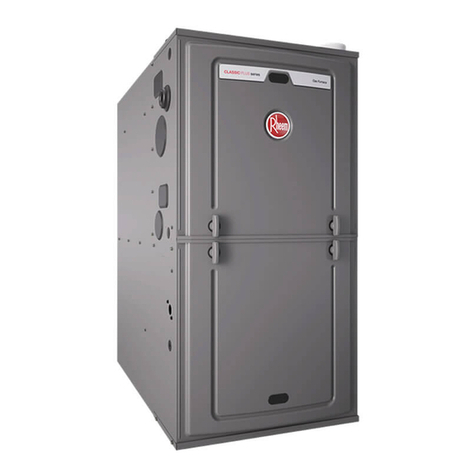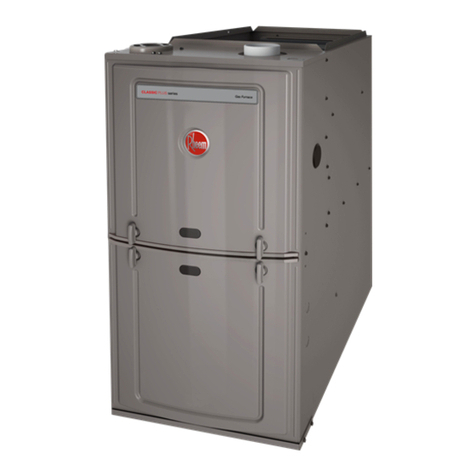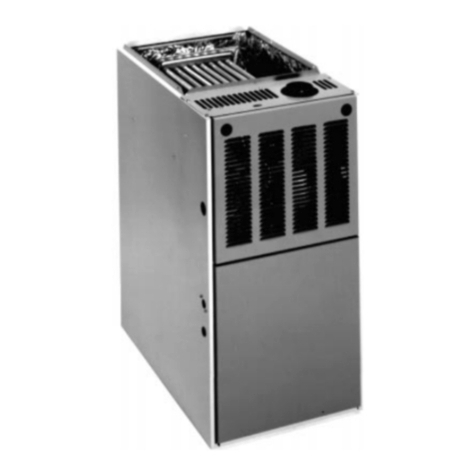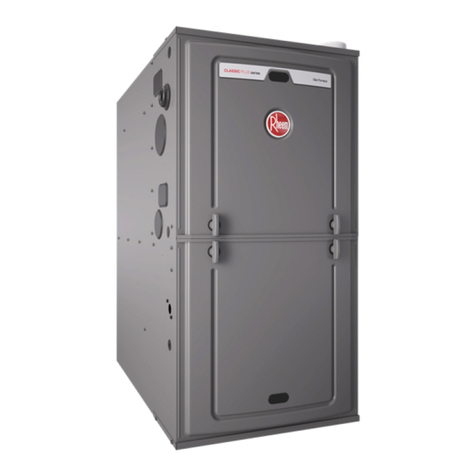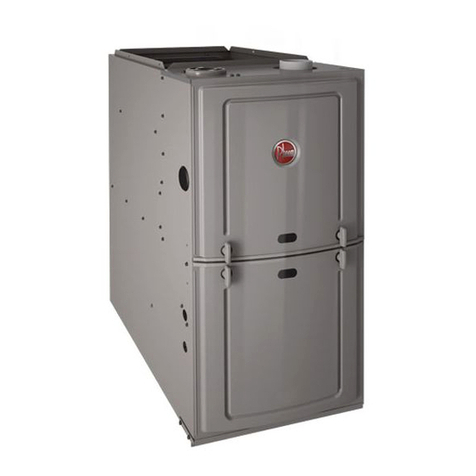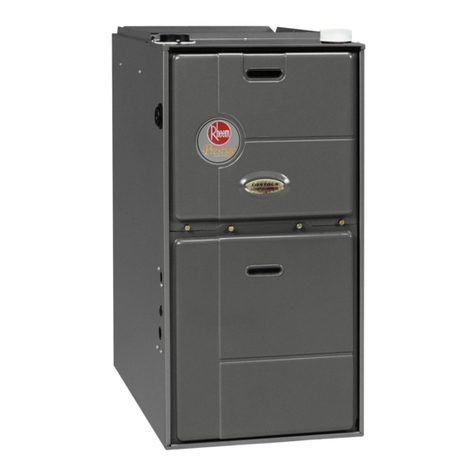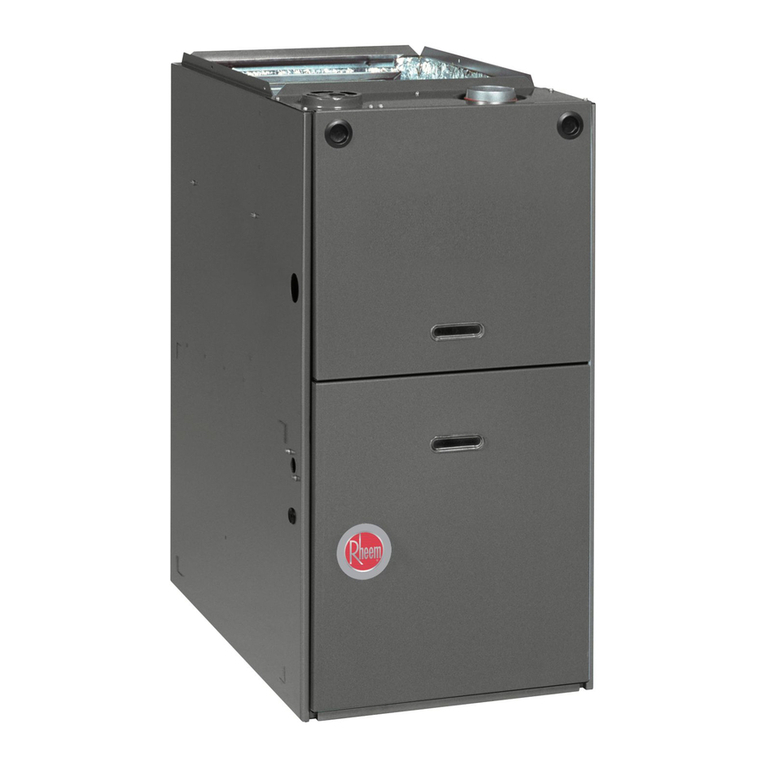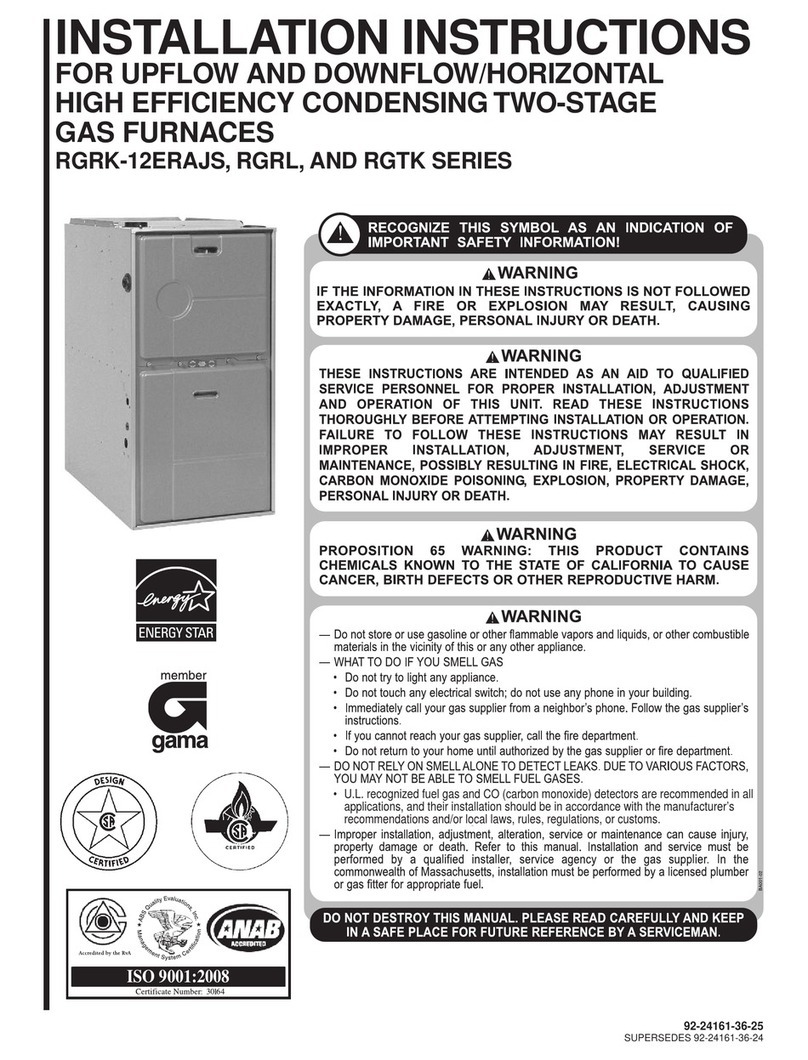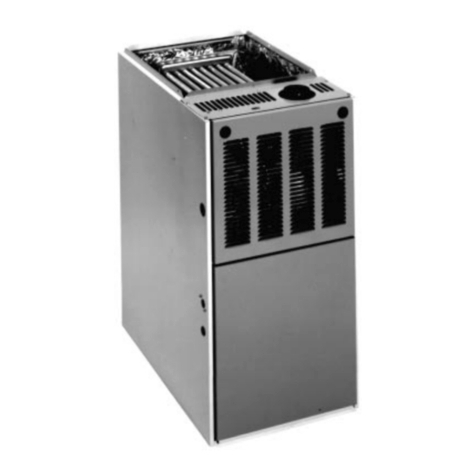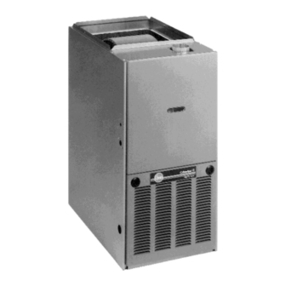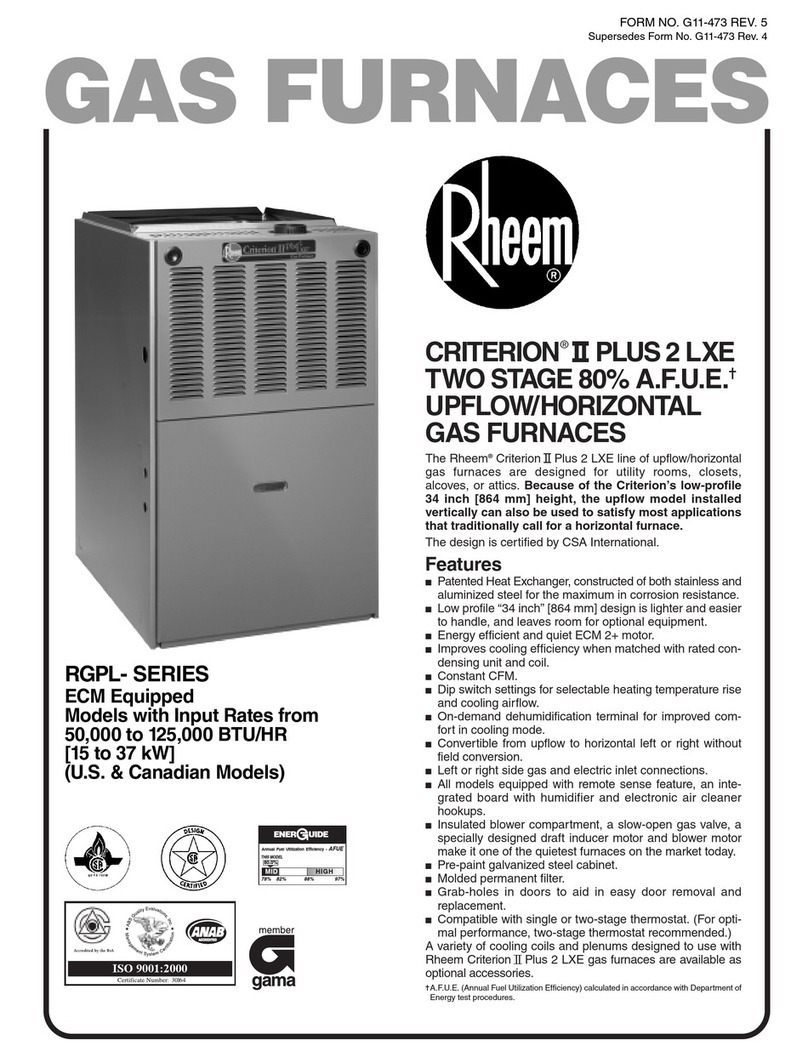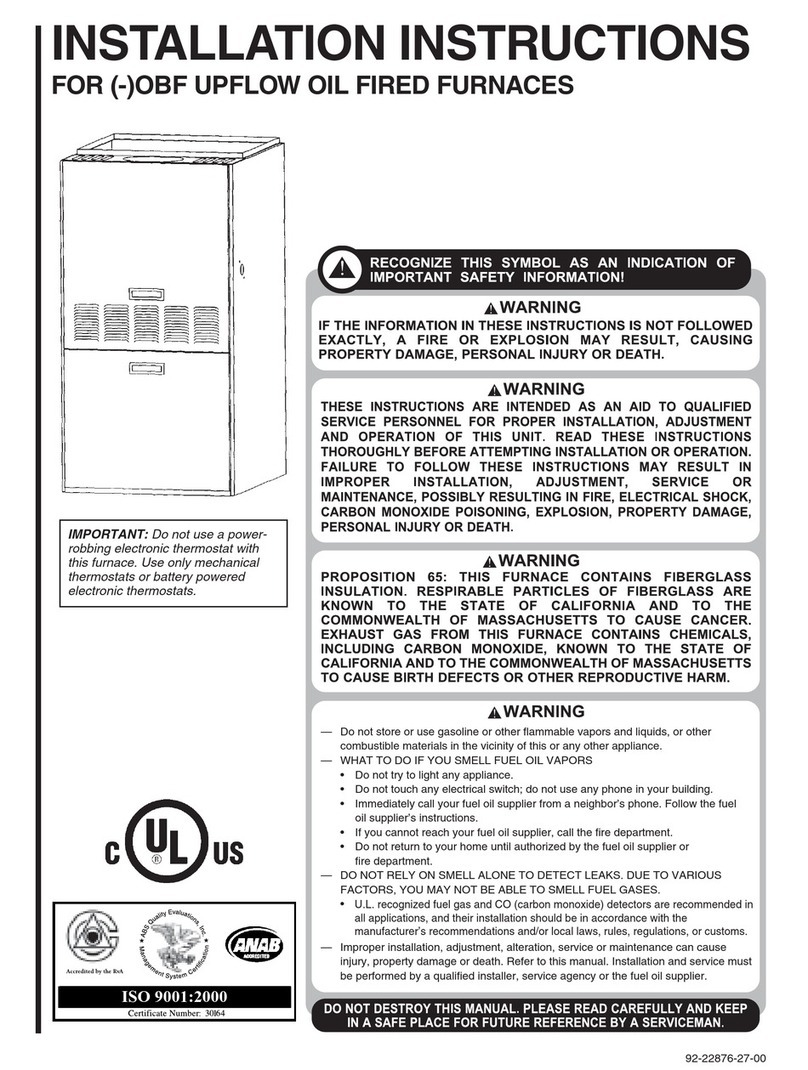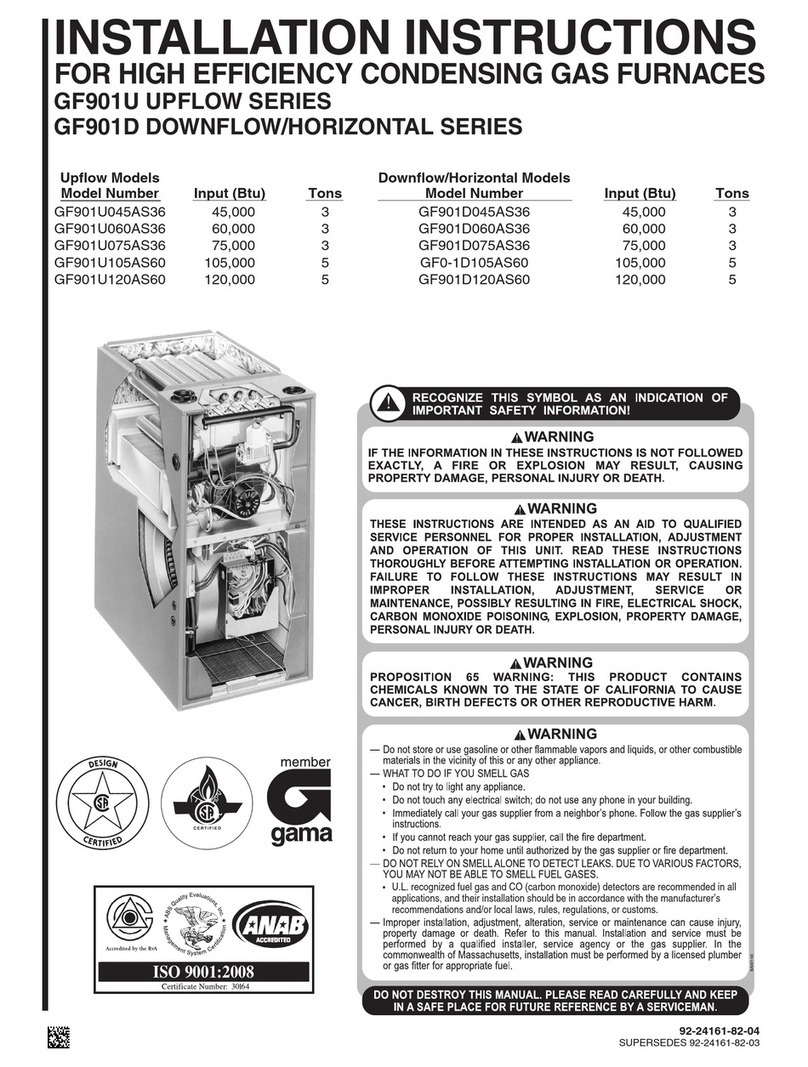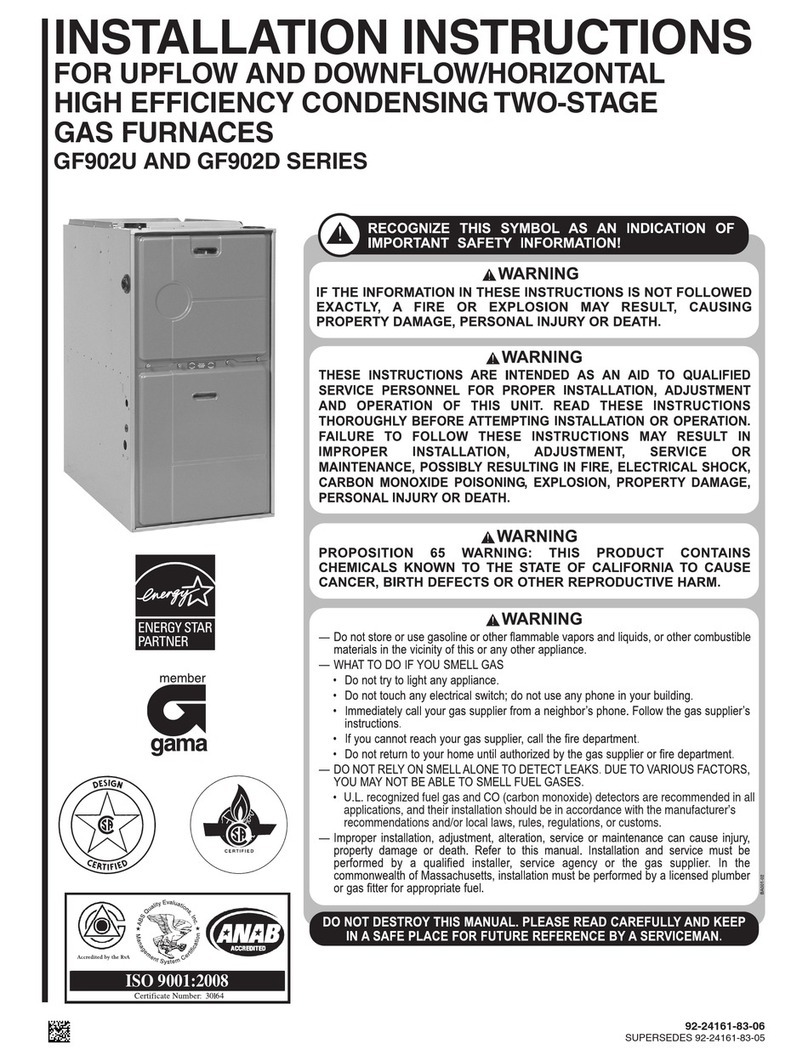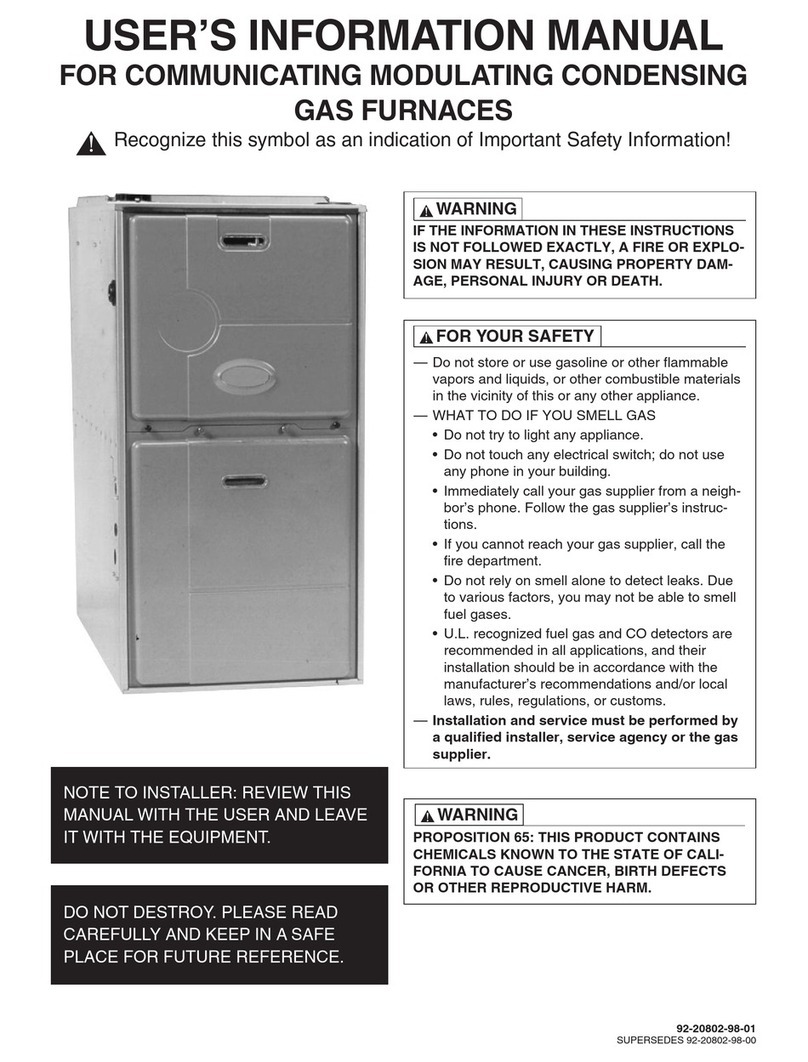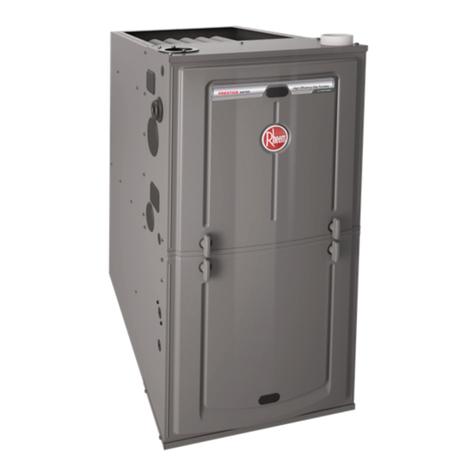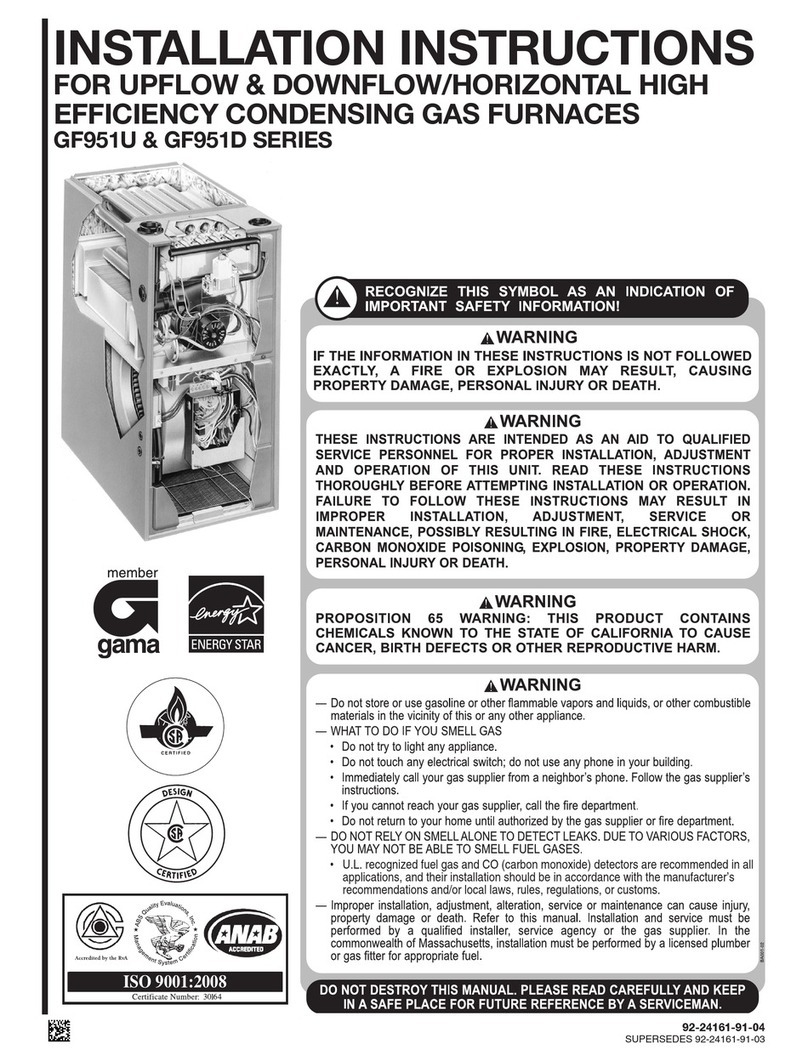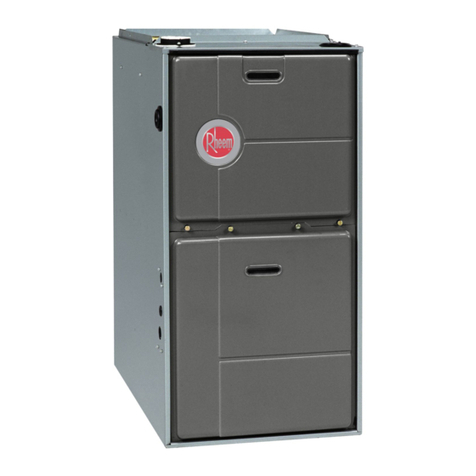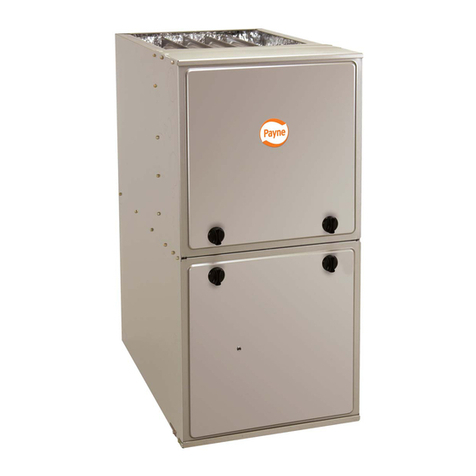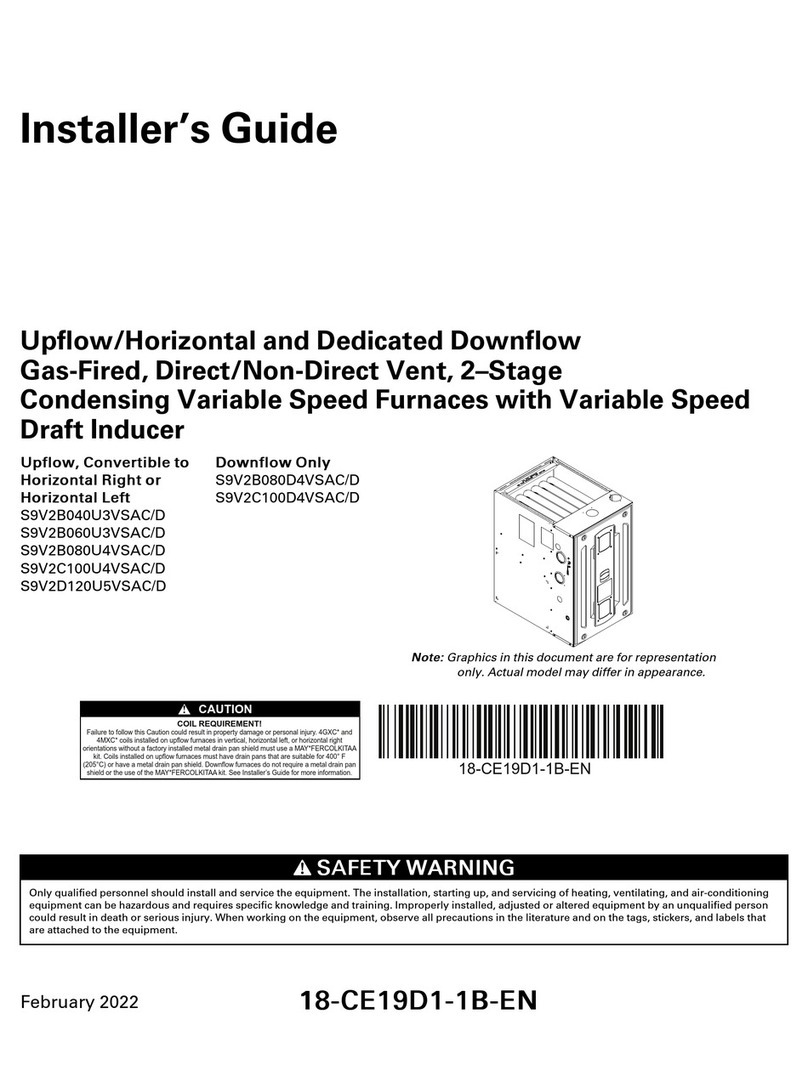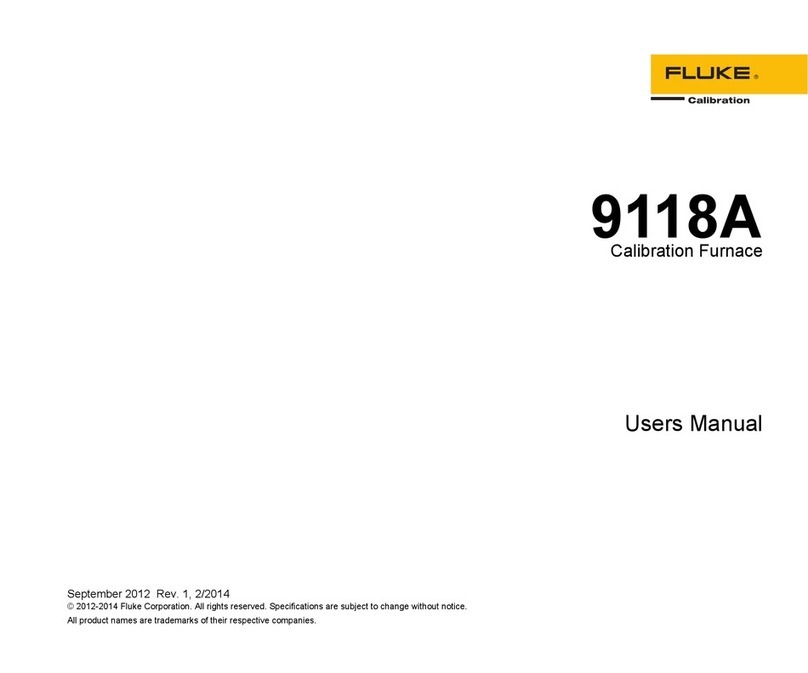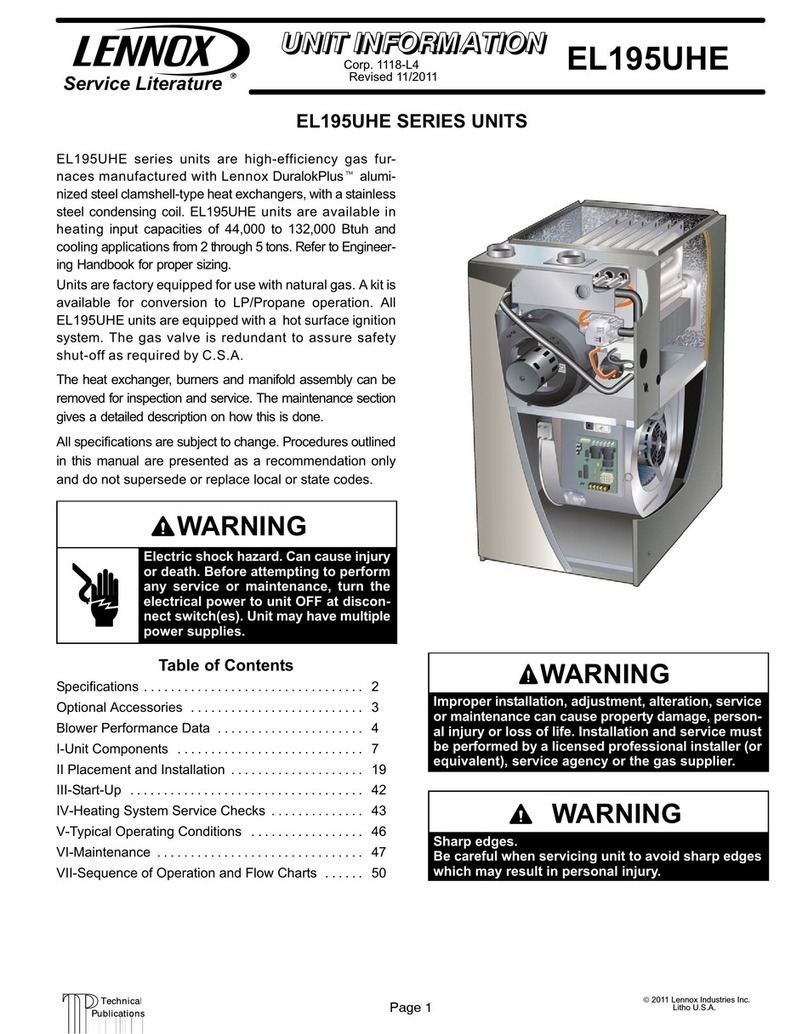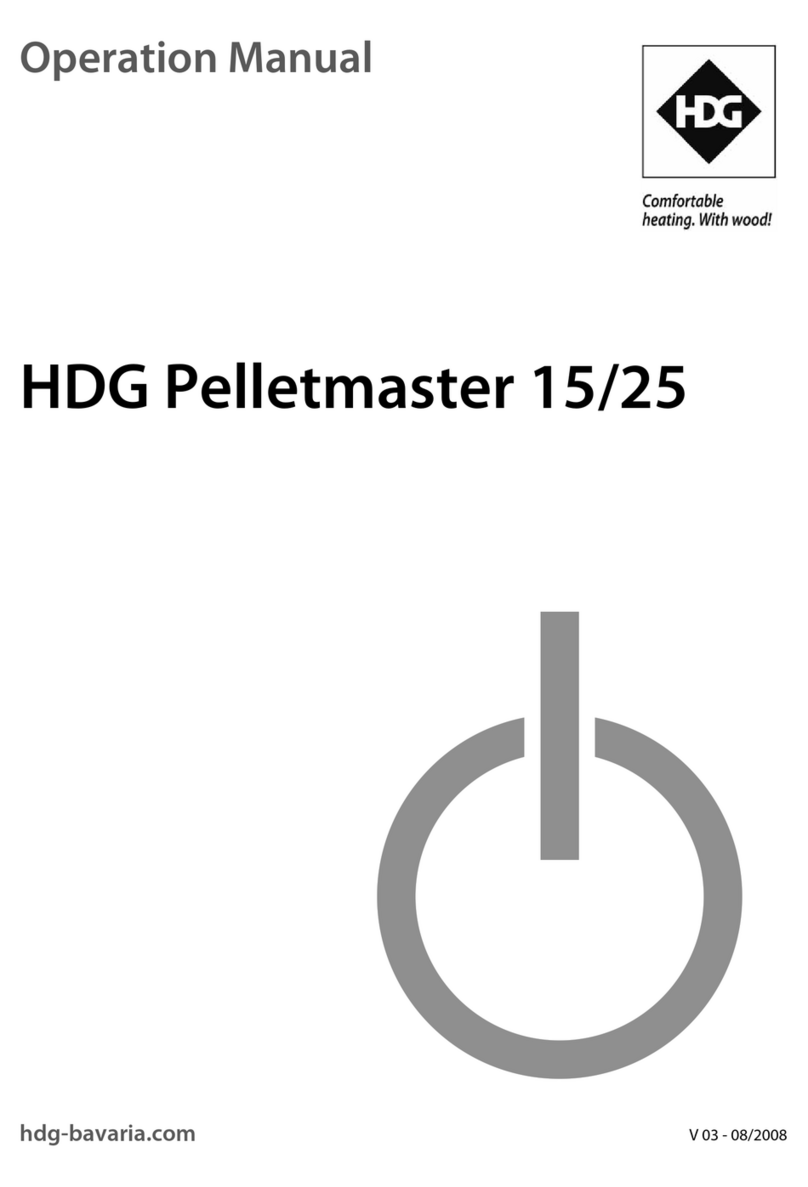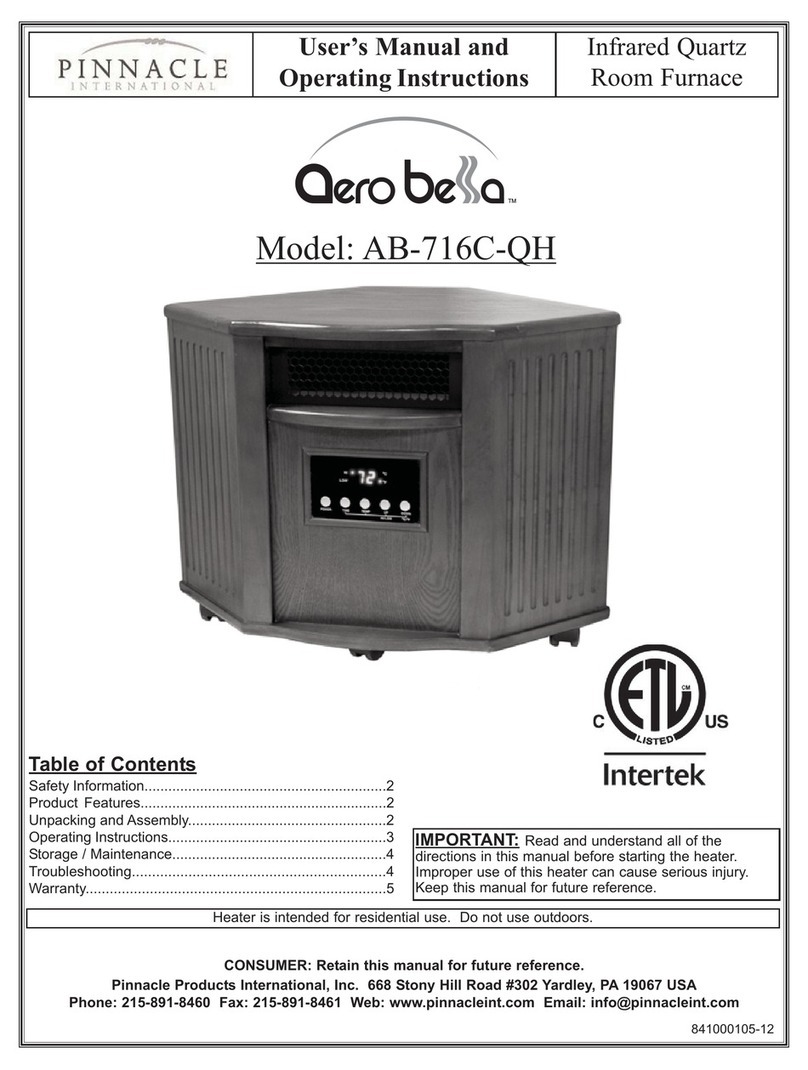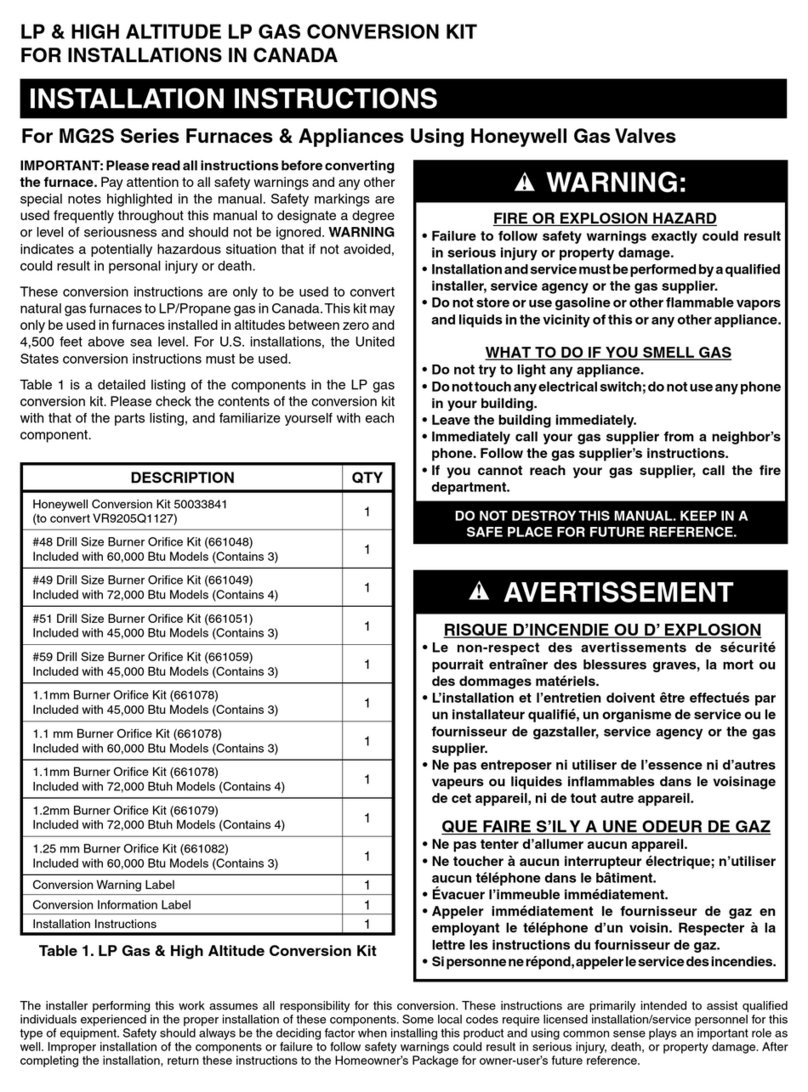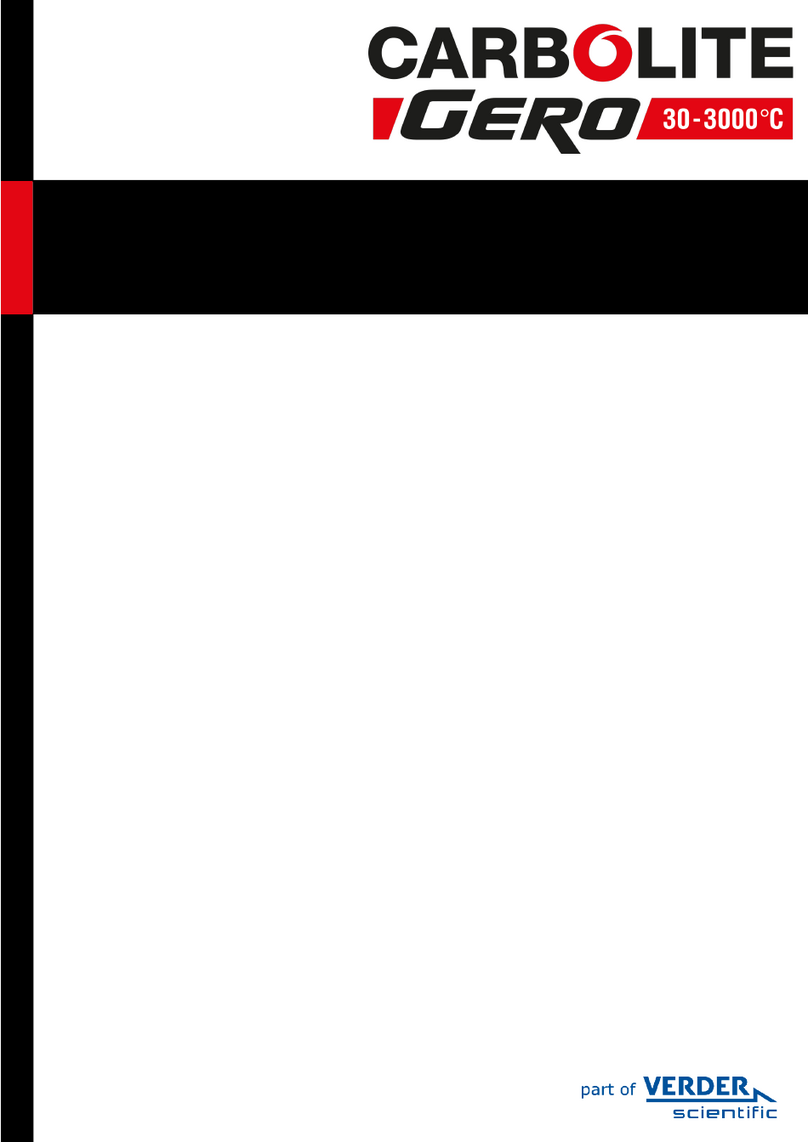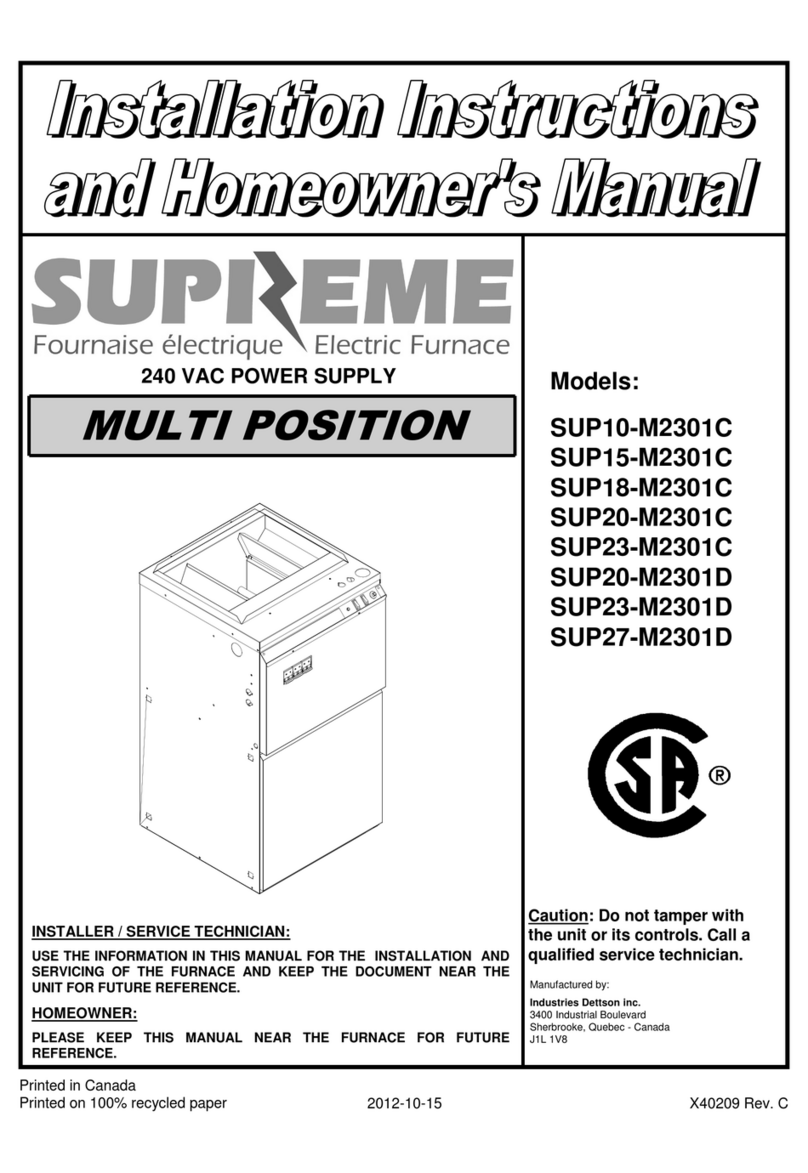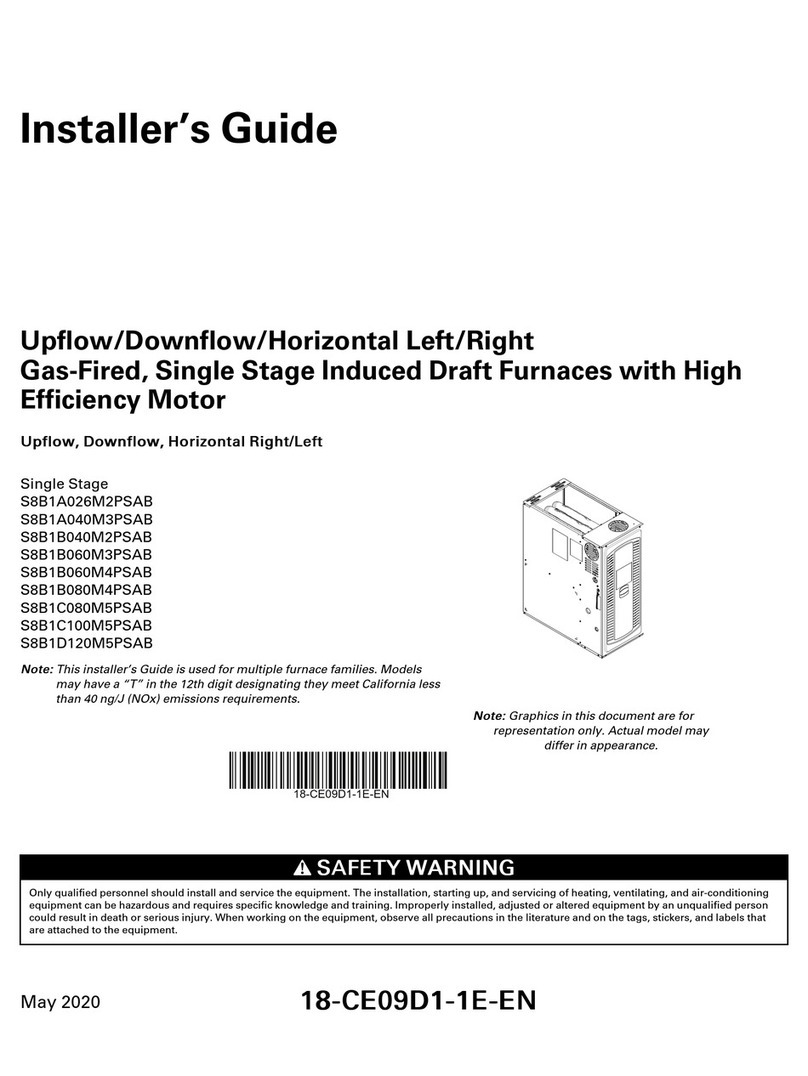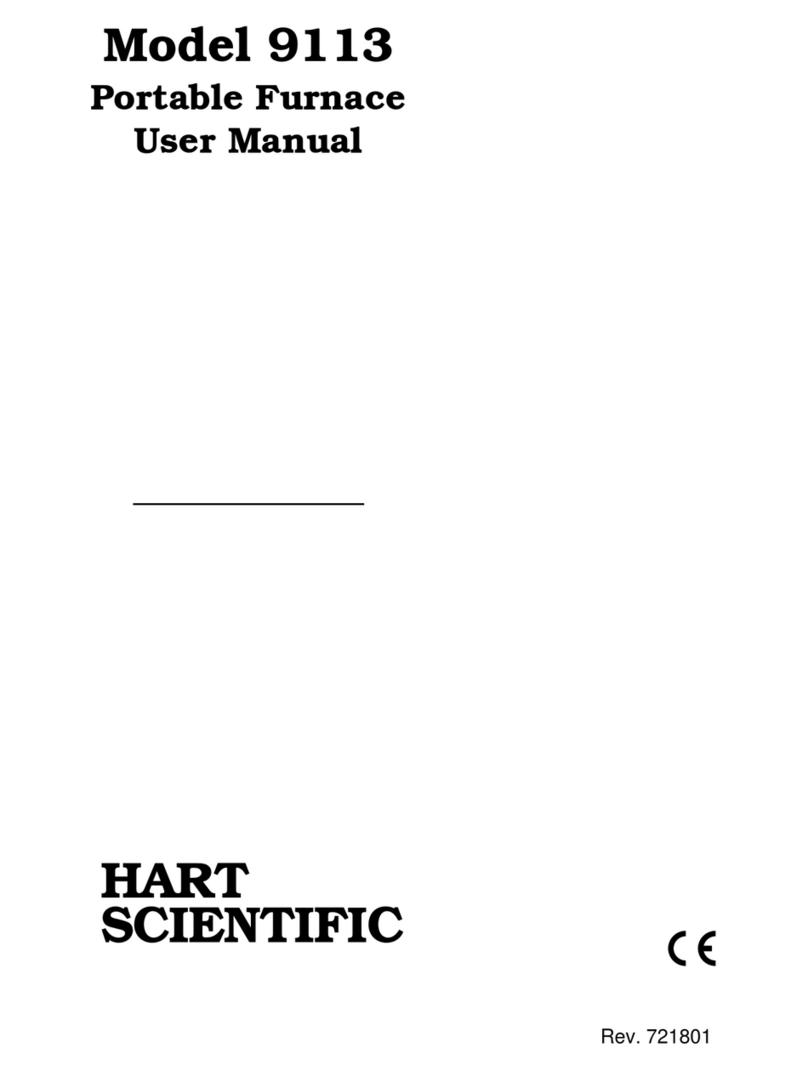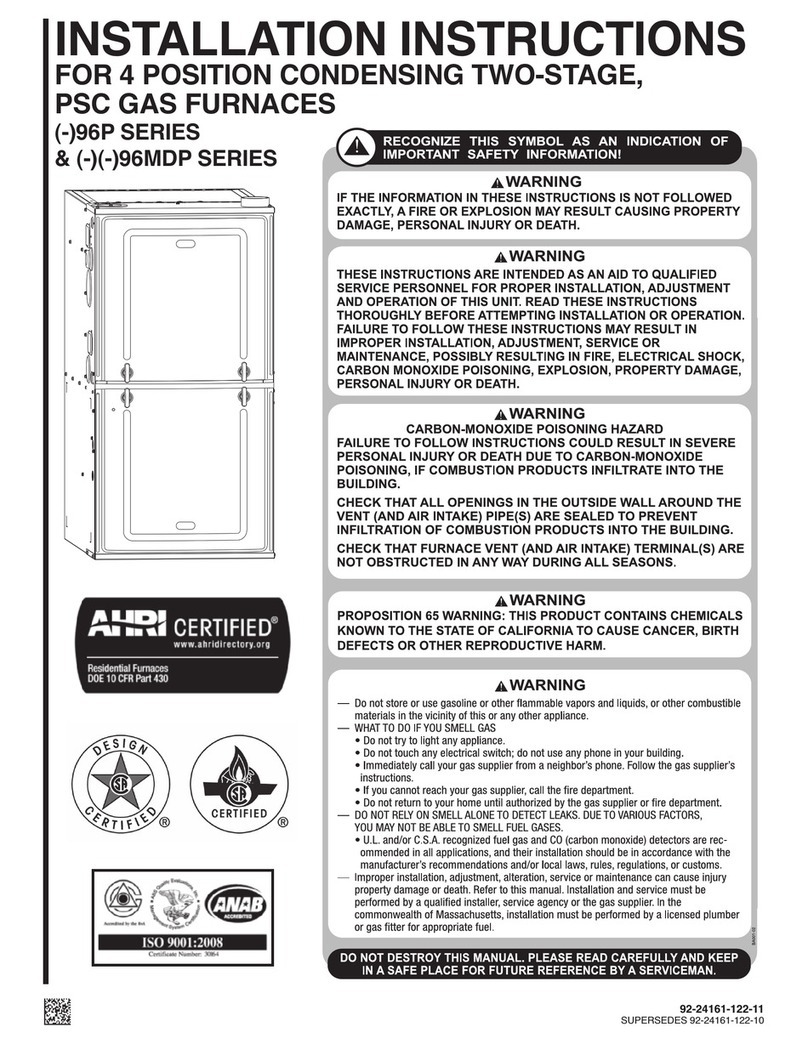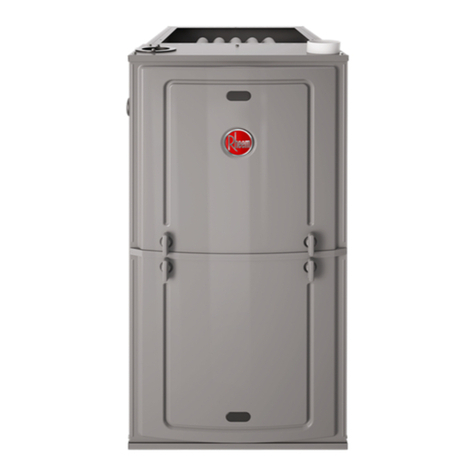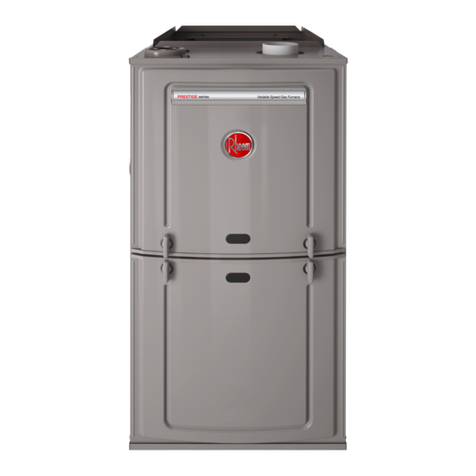
6
The (-)GPT/(-)GLT series furnaces are
design certified by SA for use with
natural and propane gases as follows:
As a ategory I furnace, it may be
vented vertically with type B-1 vent
pipe and also may be common
vented as described in these
instructions.
This furnace should be installed in
accordance with the American National
Standard Z223.1 - latest edition booklet
entitled “National Fuel Gas ode”
(NFPA 54) (in anada, SA B149.1
and .2 Installation odes for gas
burning appliances), and the
requirements or codes of the local utility
or other authority having jurisdiction
including local plumbing or waste water
codes.
The National Appliance Energy
onservation Act (NAE A) of 1987
states that any gas furnace
manufactured after January 1, 1992,
must have a minimum Annual Fuel
Utilization Efficiency (AFUE) of 78%.
The higher the AFUE percentage the
more usable heat energy the consumer
gets for every dollar of fuel purchased.
This is similar to the EPA's minimum
gas mileage requirement for
automobiles. It gives the consumer a
relatively easy way to make direct
efficiency comparisons between
different furnace brands and styles.
A high AFUE value, which translates
into a low operating cost, is not the only
concern that consumers have. They
also want a furnace with a reasonable
installed cost. They want a furnace that
provides them with comfort – their main
concern. And they expect a furnace with
exceptional reliability and longevity.
Gas furnace manufacturers are always
striving to provide consumers with the
best furnace value. The Low Profile
Furnace addresses all those consumer
needs. It gives exceptional efficiency
with a low installation cost. It delivers
the comfort the customer wants along
with the reliability they expect.
The key to all these customer benefits is
the furnace's heat exchanger. The
materials used to construct the furnace
in general and the heat exchanger in
particular make it a rugged, long lasting
unit. The unique heat exchanger design
provides the customer with a furnace
only 34 inches high. This gives the
consumer a unit easily installed in
almost every location that accepts all
customary accessories.
With the introduction of higher efficiency
furnaces, special attention must be paid
to the venting system. Only listed
venting systems may be used as stated
in the installation instructions and the
National Fuel Gas Code, ANSI Z223.1
(NFPA 54), or the Canadian CAN/CGA
B149.1 and B149.2 Installation Codes
for Gas Burning Appliances. Since
furnace technology and venting
requirements are changing, awareness
of local, state, and federal codes and
industry changes is imperative.
NOTE: Always perform a proper heat
loss calculation before specifying the
furnace size. This ensures that the
furnace is sized to adequately,
economically, heat the building and
provide the correct airflow for your
application.
IMPORTANT: PROPER
APPLI ATION, INSTALLATION AND
MAINTENAN E OF THIS FURNA E
IS A MUST IF ONSUMERS ARE TO
RE EIVE THE FULL BENEFITS FOR
WHI H THEY HAVE PAID.
Additional helpful publications available
from the “National Fire Protection
Association” are: NFPA-90A –
Installation of Air onditioning and
Ventilating Systems 1985 or latest
edition. NFPA-90B – Warm Air Heating
and Air onditioning Systems 1984.
These publications are available from:
National Fire Protection Association,
Inc.
Batterymarch Park
Quincy, MA 02269
SA-INTERNATIONAL
178 Rexdale Blvd.
Etobicoke (Toronto), Ontario
anada M9W, 1R3
IMPORTANT INFORMATION
ABOUT EFFICIENCY AND
INDOOR AIR
QUALITY
entral cooling and heating equipment
is only as efficient as the duct system
that carries the cooled or heated air.
To maintain efficiency, comfort and
good indoor air quality, it is important
to have the proper balance between
the air being supplied to each room
and the air returning to the cooling and
heating equipment.
Proper balance and sealing of the duct
system improves the efficiency of the
heating and air conditioning system
and improves the indoor air quality of
the home by reducing the amount of
airborne pollutants that enter homes
from spaces where the ductwork and /
or equipment is located. The
manufacturer and the U.S.
Environmental Protection Agency’s
Energy Star Program recommend that
central duct systems be checked by a
qualified contractor for proper balance
and sealing.
DUCT LEAK CAN CREATE AN
UNBALANCED Y TEM AND DRAW
POLLUTANT UCH A DIRT,
DU T, FUME AND ODOR INTO
THE HOME CAU ING PROPERTY
DAMAGE. FUME AND ODOR
FROM TOXIC, VOLATILE OR
FLAMMABLE CHEMICAL , A
WELL A AUTOMOBILE EXHAU T
AND CARBON MONOXIDE (CO),
CAN BE DRAWN INTO THE LIVING
PACE THROUGH LEAKING DUCT
AND UNBALANCED DUCT
Y TEM CAU ING PER ONAL
INJURY OR DEATH ( EE FIGURE 1).
• IF AIR-MOVING EQUIPMENT OR
DUCTWORK I LOCATED IN
GARAGE OR OFF-GARAGE
TORAGE AREA - ALL JOINT ,
EAM , AND OPENING IN THE
EQUIPMENT AND DUCT MU T BE
EALED TO LIMIT THE
MIGRATION OF TOXIC FUME
AND ODOR INCLUDING
CARBON MONOXIDE FROM
MIGRATING INTO THE LIVING
PACE.
• IF AIR-MOVING EQUIPMENT OR
DUCTWORK I LOCATED IN
PACE CONTAINING FUEL
BURNING APPLIANCE UCH A
WATER HEATER OR BOILER -
GENERAL INFORMATION
FIGURE 1
MIGRATION OF DANGEROU UB TANCE , FUME , AND ODOR INTO LIVING PACE
!WARNING
